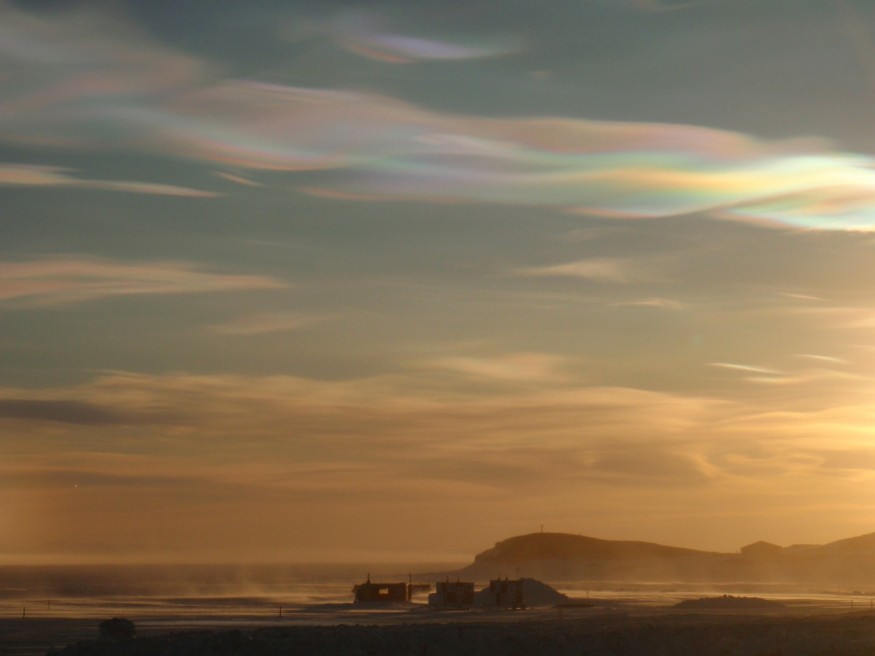Ultra-rare rainbow clouds that emit intense, multi-colored light like an aurora borealis were spotted in different locations across the Arctic region. What could have caused this jaw-dropping spectacle?
The dark skies in the Arctic region may have looked like the ethereal aurora, but it was not caused by them. According to Live Science, these iridescent clouds were formed by tiny ice crystals floating higher in the atmosphere than is typically possible.

Polar Stratospheric Clouds (PSC) in the Arctic
Polar stratospheric clouds (PSC) occur only when temperatures in the lower stratosphere fall below -114 degrees Fahrenheit (-81 degrees Celsius). Clouds do not normally develop in the stratosphere because it is too dry; but as per Spaceweather.com, these severe temperatures have widely-spaced water molecules that begin to consolidate into small ice crystals and create clouds.
This means that PSCs may form between 9.3 and 15.5 miles (15 to 25 kilometers), which is significantly higher up in the atmosphere than typical clouds.
When sunlight hits the ice crystal clouds, it is scattered and creates multiple different wavelengths of light, generating rainbow clouds or PSCs. Sunlight can hit the cloud crystals and scatter above an observer even with the Sun being present on the horizon because of the extreme latitude where the clouds are, which is when they appear to be the brightest.
According to Spaceweather.com, strong freezing temperatures in the stratosphere allowed for a rare outbreak of PSCs over the Arctic Circle, including Iceland, Norway, and Finland on January 25.
Jónna Gurn skarsdóttir, an amateur photographer, caught a breathtaking view of the vivid clouds over the summit of Mount Jökultindur in Iceland, while photographer Fredrik Broms captured a series of photos of the multicolored lights above Kvalya near Tromsø in Norway.
Two Types of Polar Stratospheric Clouds
The University Corporation for Atmospheric Research (UCAR) said that there are two distinct types of PSCs. The first is Type I clouds, which are made of nitric acid and water or even sometimes known as sulfuric acid. Type I produces less spectacular colors and is sometimes linked to ozone holes.
On the other hand, Type II clouds contain water ice and produce more vivid colors. The ones recently seen in the Arctic Circle were Type II PSCs, which are also referred to as nacreous clouds due to their iridescent hues that can resemble sometimes the mother-of-pearl clouds.
Nacreous clouds are sometimes mistaken for the northern lights, or aurora borealis, in the Arctic due to their bright hues. When extremely energetic particles generated by the sun move through the magnetic field lines of Earth's magnetosphere, these more typical occurrences happen.
However, they are rarer than the Type I PSCs.Spacewaether.com explains that Type II clouds occur only two or three times every year in the Arctic, usually during the colder winter months.
But as per NASA, both types of PSCs could occur more often in the future because of the worsening climate change that creates more extreme weather.
RELATED ARTICLE: 'Mother-of-Pearl' Cloud Known for its Bright Colors Spotted in Scotland; How Do Nacreous Clouds Form?
Check out more news and information on Clouds in Science Times.
© 2025 ScienceTimes.com All rights reserved. Do not reproduce without permission. The window to the world of Science Times.











